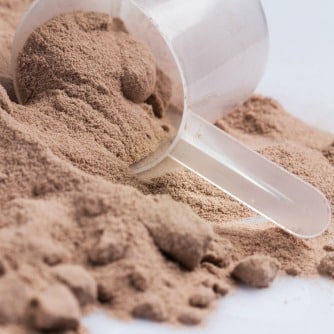Occurring after meals, diabetic blood sugar spikes have been linked to cardiovascular disease, cancer, Alzheimer’s disease, kidney failure, and retinal damage. Daniela Jakubowicz, from Tel Aviv University (Israel), and colleagues report that consumption of whey protein concentrate, found in the watery portion of milk separated from cheese curds, before breakfast, may help to manage this glucose surge. The researchers enrolled 15 individuals with well-controlled type 2 diabetes, to receive either 50 grams of whey in 250 ml water or a placebo, followed by a standardized high-glycemic index breakfast of three slices of white bread and sugary jelly (a meal designed to produce the maximum post-meal glucose spike). Blood samples were taken 30 minutes before the meal, when the whey protein or placebo drinks were consumed. Further blood samples, assessing plasma concentration of glucose, intact glucagon-like peptide-1 (GLP-1) , and insulin concentrations, were taken when the breakfast was served and at 15, 30, 60, 90, 120, 150, and 180 minute intervals after the meal. The team observed that glucose levels were reduced by 28% after the whey pre-load over the 180-minute post-meal period, with a uniform reduction during early and late phases. With whey pre-load, insulin and GLP-1 responses also were significantly higher (105 and 141%, respectively), producing a 96% increase in early insulin response. Observing that: “consumption of whey protein shortly before a high-glycaemic-index breakfast increased the early prandial and late insulin secretion, augmented tGLP-1 and iGLP-1 responses and reduced postprandial glycaemia in type 2 diabetic patients,” the study authors write that: “Whey protein may therefore represent a novel approach for enhancing glucose-lowering strategies in type 2 diabetes.”
New “Whey” to Control Diabetes
Jakubowicz D, Froy O, Ahren B, Boaz M, Landau Z, Bar-Dayan Y, Ganz T, Barnea M, Wainstein J. “Incretin, insulinotropic and glucose-lowering effects of whey protein pre-load in type 2 diabetes: a randomised clinical trial.” Diabetologia. 2014 Sep;57(9):1807-11.
RELATED ARTICLES




